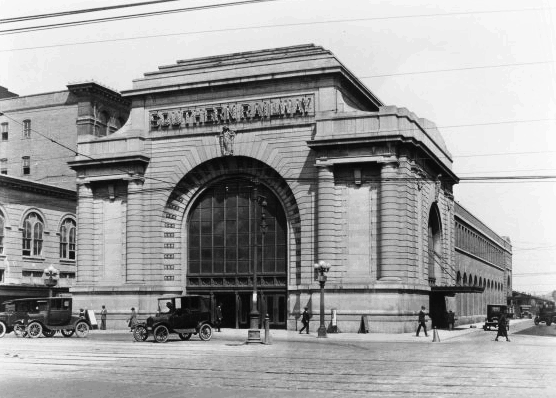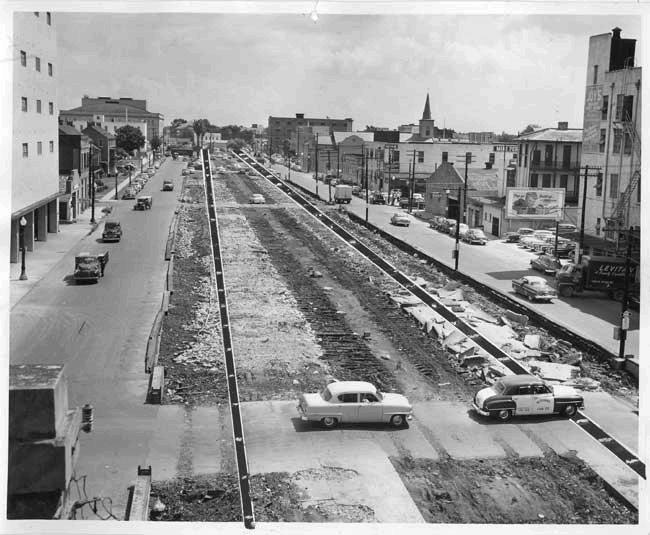|
Today in New Orleans History |
|
|
July 20


 To receive an update for each day in New Orleans history,
join our facebook page - Today in New
Orleans History.
 To receive an update for each day in New Orleans
history, join our facebook page
- Today in New Orleans History
Abstract expressionist painter, sculptor, and collagist A. Fred (Fritz) Bultman (April 4, 1919 –
July 20, 1985) was a member of the New York School of artists. The second child and only son of A. Fred and Pauline Bultman,
his father was a prominent New Orleanian who owned the Bultman funeral company. By the age of thirteen, Frtiz was
interested in art, and worked with Morris Graves, who was a family friend.As a high school junior in 1935 Fritz went to study
in Munich for two years, and there boarded with Maria Hofmann, the wife of artist and teacher Hans Hofmann. After returning
to the United States he studied with Hofmann in New York City and Provincetown, Massachusetts. Despite his father's wishes
that he become an architect, with Hofmann's encouragement he decided instead to continue his study of art. In 1944 he bought
a house in Provincetown, and thenceforth Bultman and his wife Jeanne divided their time between Cape Cod and New York City.
His early paintings have been described as "rough and painterly", an amalgam of symbolism and geometry. Bultman
was exhibiting with other abstract expressionists by the late 1940s, and in 1950 was aligned with the group of New York School
artists, nicknamed the "Irascibles" in an article in Life magazine, who signed a letter to the Metropolitan Museum
of Art protesting the institution's conservative policies. With the assistance of a grant from Italy he studied bronze casting
in Florence in 1951; subsequently he was the sole abstract expressionist to fully integrate sculpture into his oeuvre.
Affected by anxiety and depression, Bultman worked little between 1952 and 1956, and resumed painting and sculpting after
undergoing Freudian analysis. At a time when African Americans were prohibited from visiting white museums in the south, in
1963 Bultman and his wife led a group of prominent New York artists and writers in the creation of a collection of modern
art for Tougaloo College, a black institution in Jackson, Mississippi. Bultman was awarded a Fulbright Scholarship in 1964-5
to work in Paris. In the 1960s Bultman began to make large collages, using pre-painted paper cut or torn and assembled into
shapes reminiscent of his figurative drawings and more abstract sexual symbolism. In 1976 he started making stained
glass windows with the aid of his wife. Bultman died of cancer in 1985. To Robert Motherwell, Bultman was "one
of the most splendid, radiant and inspired painters of my generation.", and David Houston, curator of the Ogden Museum
of Southern Art in New Orleans called him "an important artist from the South who was part of that great moment that
changed the American cultural landscape." It has been suggested that Bultman's career and subsequent reputation suffered
from the vagaries of chance: he was not available for inclusion in the now iconic photo shoot for Life magazine that helped
establish the reputations of the New York School painters; another possibility, according to Motherwell, was Bultman's lack
of interest in "art world politics". (Wiki)
NOPL Civil Defense Photograph -- Operation Alert, "General Maroist talking to Technical Table", July 20 and 21, 1956. WPA photo -- Foundations are placed on the new concrete bridge at Robert E. Lee Blvd. across the Orleans Canal. This bridge replaces an old wooden structure and serves the lower section of the Lake Vista subdivision, July 20,
1937. WPA photos -- WPA crews laying paving various streets in Lakeview, July 20, 1937. George Foster Shepley was appointed acting Mayor of New Orleans in May 1862. His administration as Mayor
lasted only one month and a few days and was characterized by mildness and dignity. He subsequently was appointed Military
Governor of Louisiana. The question of currency during Shepley’s short term was a very serious one. The large amount
of paper money in circulation was beginning to occasion quite a bit of embarrassment. Notes and checks of all kinds were being
destroyed by the chairman of the Finance Committee. The City Attorney, under direction of the City Council, took steps to
prosecute those who thereafter issued notes or checks of any kid. Steps were also being taken by the Council to authorize
the city to issue city notes signed by the Treasurer equal in amount and of denominations similar to those issued by individuals.
With these the individual issues were to be gradually taken up. By October 28, 1862, $1,435,104 in such city notes had been
issued, but the benefit seems not to have been very great. A new order, which had been anticipated, prohibiting Confederate
notes, was issued and this added new difficulties to an already complex condition of affairs. During the War, Shelley had
become Colonel of the Twelfth Maine Volunteers and commanded one of the first brigades that entered New Orleans. On the inauguration
of Governor Hahn, Shepley was transferred to eastern Virginia and subsequently he was appointed military governor of Richmond
which post he served from April l3, 1865 until the end of June, when he resigned. Resuming his law practice at Portland, he
declined a seat on the bench of the United States Court. He figured conspicuously in Maine as a member of National Democracy
and was a warm personal friend of President Jefferson Davis whom he had entertained while visiting New England some years
before. He died in Portland, Maine, July 20, 1878. (NOPL) NOPL photo -- James H. Dakin Collection, Ink and wash, New Orleans Gaslight and Banking Co. property (front elevation; first and second floor plans; transverse section), July 20, 1844. NOPL Image -- Plan showing location of the Powder Magazine and other city property adjacent to the Duverger and St. Amand properties in Algiers, July 20, 180?. |
|
|

To receive an update for each day in New Orleans history,
join our facebook page - Today in New
Orleans History.
Analytics |



